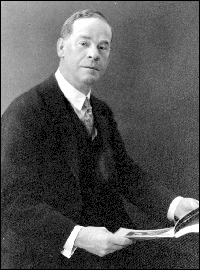
I love this story.
Francis M. Rattenbury was born in 1867 in Leeds, England. Rattenbury emigrated to Canada in 1892, first working as agent for Bradford investors in Vancouver. His experience in commercial and civic design, structural systems, architectural historical vocabulary and office practice furthered his career quickly. Aided by his prize-winning ability as draftsman, Rattenbury quickly supplanted the earlier generation of immigrant architects in the province. He won the 1893 competition for the new Provincial Legislature in Victoria a building which is beautiful and which is open for tours today. Despite cost overruns, the building opened in 1898 to considerable praise. He also designed the famous Empress Hotel in Victoria which overlooks the bay.
Rattenbury’s demonstrated competence at architectural display won him patronage from the leading institutions as well as government. I read once that he designed the White Pass administration building in Skagway that today houses the National Park’s administration. Rattenbury also was a promoter of the Bennett Lake & Klondyke Navigation Company.
Unfortunately for one so talented in architecture and business, he failed miserably in his personal life. Rattenbury married Florence Eleanor Nunn on June 18, 1898 and had a son Francis Burgoyne Rattenbury that same year. Rattenbury and Florence did not get along and fought often when he was at home, but he stayed away on projects in the Yukon during the gold rush. Eventually he divorced in 1925 and married Alma, who at the time of their marriage was 26 to his 56 years of age.
Hastened by scandal attaching to his divorce and remarriage, Rattenbury returned to Britain in 1929. He was murdered by his 18 year old chauffeur, George Stoner, Alma’s lover, on this day, March 28, 1935. (Stoner crept up behind Rattenbury and struck him on the head three times with a mallet.)
Stoner was found guilty of murder and sentenced to hang. Mrs. Alma Rattenbury, although chastised for being an adultress, was found not guilty of any crime and released. Despite her freedom, Alma was distraught. Four days later she waded into the Avon River and resolutely stabbed herself six times before delivering a fatal wound. Ouch, how Shakesperian!
Stoner’s death sentence, because of public pressure, was commuted to life imprisonment. After serving seven years he was released in 1942 to join the army. He took part in the Normandy Invasion on June 6, 1944.
The Right Way On, Olive p 165; Alaska State Archives; www.thecanadianencyclopedia.com









